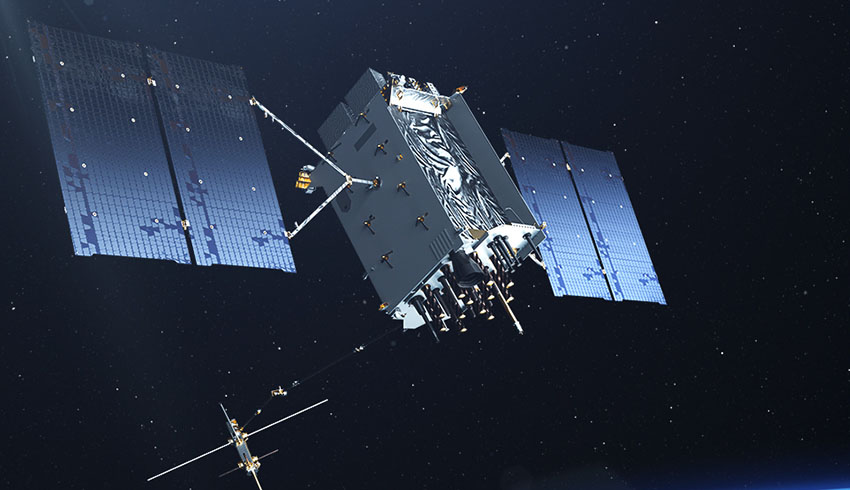The third Lockheed Martin-built GPS III space vehicle (GPS III SV03) was shipped to Cape Canaveral from the company’s GPS III Processing Facility near Denver aboard a massive Air Force C-17 aircraft traveling from Buckley Air Force Base, Colorado.
In keeping with its tradition of nicknaming satellites after famous explorers, the GPS III team nicknamed GPS III SV03 “Columbus” after the Italian explorer Christopher Columbus.
GPS III SV03 is the latest of up to 32 next-generation GPS III/GPS III Follow-On (GPS IIIF) satellites Lockheed Martin has designed and is building to help the Space Force modernise today’s GPS constellation with new technology and capabilities.
Tonya Ladwig, Lockheed Martin’s program manager for GPS III, said, “Every day, more than 4 billion civil, commercial and military users rely on the positioning, navigation and timing (PNT) services provided by 31 GPS satellites launched since 1997.”
GPS III is the most powerful and resilient GPS satellite ever put on orbit. Developed with an entirely new design for US and allied forces, GPS III has three times greater accuracy and up to eight times improved anti-jamming capabilities over any previous GPS satellites in the constellation.
GPS III is also the first GPS satellite to broadcast the new L1C civil signal, which is shared by other international global navigation satellite systems, like Galileo, to improve future connectivity worldwide for commercial and civilian users.
“We are excited to help the Space Force refresh the constellation to ensure US and allied forces always have the best technology and that the US global positioning system remains the gold standard for PNT,” Ladwig added.
GPS III was intentionally designed to evolve with new technology and changing mission needs. The satellite's evolutionary modular design will allow new “GPS IIIF” capabilities to start being added at the 11th satellite.
These will include a fully digital navigation payload, a Regional Military Protection capability, an accuracy-enhancing Laser Retroreflector Array, and a Search & Rescue payload.
Meanwhile, GPS III satellites are beginning to join the constellation. On 13 January 2020, the first Lockheed Martin-built GPS III satellite, GPS III SV01 (“Vespucci”), was set “healthy and active” by the 2nd Space Operations Squadron (2 SOPS) at Schriever Air Force Base in Colorado.
2 SOPS is now using the GPS III Contingency Operations (COps)-upgraded OCS ground control system to operate both the new GPS III and previously launched GPS satellites.
Johnathon Caldwell, Lockheed Martin’s vice president for navigation systems, added, “It’s an exciting time across the GPS mission as we bring together the best of our space, ground and operations systems to help the United States Space Force modernise this critical national capability.”
Lockheed Martin is proud to be a part of the US Space Force’s GPS III team. The GPS III team is led by the Production Corps, Medium Earth Orbit Division, at the Space Force’s Space and Missile Systems Centre, at Los Angeles Air Force Base.
2 SOPS, at Schriever Air Force Base, manages and operates the GPS constellation for both civil and military users.

